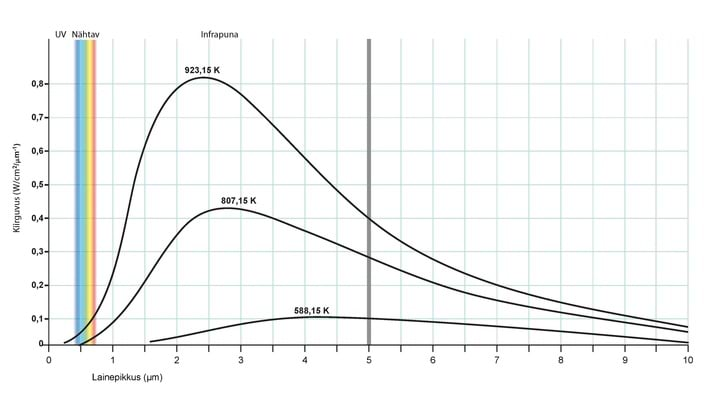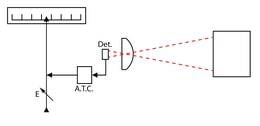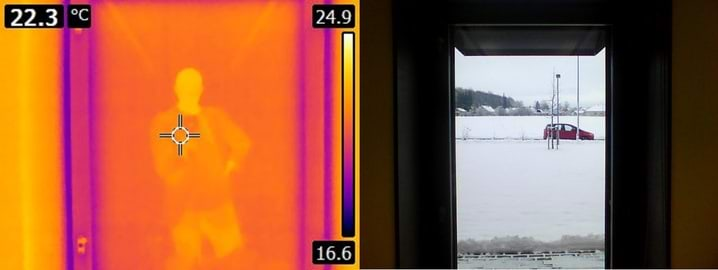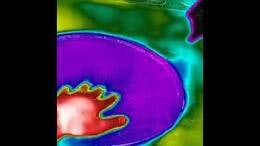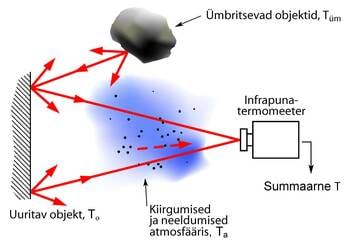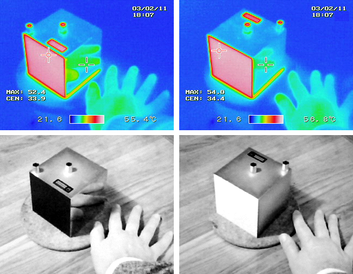How do infrared thermometers and thermal imaging cameras work?
In short: an infrared thermometer measures the energy of infrared radiation in a range of wavelengths (typically at wavelengths approx. micrometers) . Knowing that the spectrum of thermal radiation of all bodies is determined only by their temperature and that the energy of infrared radiation is proportional to the fourth power of the body's temperature, we can determine the temperature of bodies by measuring the heating caused by the absorbed radiation energy in an infrared thermometer. Basically, an infrared thermometer works just like a calorimeter.
An infrared thermometer does not measure temperature, but the intensity of heat radiation at a certain wavelength. That is why such a thermometer does not know where this radiation comes from; it also cannot see visible light and its colors. An infrared thermometer only compares the infrared light reaching it with the spectra of black body radiation corresponding to different temperatures.
We can get an idea of possible mistakes if we use a more expensive device that works on the same principle - an infrared camera (thermal camera) and look outside through the window on a winter day. The following pair of images were taken simultaneously in one direction. In the image of the thermal camera, we mainly see the reflection of the room and the photographer on the window glass.
Why can't the infrared light from outside get into the room and thus into the thermal camera? Because glass, like water, does not transmit the infrared radiation used in infrared cameras. Glass and water act as light filters that do not transmit light of this wavelength .
An infrared thermometer (as well as an infrared camera) is an excellent tool for making qualitative measurements (warmer-colder), but its measurement result may not be very accurate. In certain cases, it shows very wrongly.
When measuring temperature with an infrared thermometer, the following must be kept in mind: the thermal radiation spectrum of a body of any temperature is the radiation spectrum of a black body only if its surface is matte and black . On the other hand, shiny metallic bodies can emit only a part of this radiation, and consequently the infrared thermometer estimates their temperature to be significantly lower than the actual one. This physical property of bodies is called emissivity . If you want to measure the temperature of a body with an infrared thermometer, first paint the place to be measured black!
The object to be measured must cover the entire field of view of the infrared thermometer . If this is not the case, we get an averaged result.
Infrared radiation is reflected from shiny surfaces , so when you measure the temperature of the mirror, you may accidentally measure your own temperature instead.
The environment surrounding the object can either emit or absorb infrared radiation . For example, infrared radiation visible to a thermal camera cannot pass through glass. However, it is not excluded that the atmosphere emits it.
